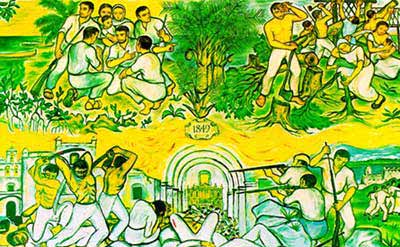Stephen's forebodings were borne out five years later. In return for the service of Indian peasants as soldiers, the whites had promised to abolish or at least reduce parochial fees, to abolish the capitation tax payable by all Indian adults, and to give them free use of public and communal lands. None of these promises were fulfilled and the Mayas rebelled in the summer of 1847 with the aim of exterminating or at least expelling the white population. The revolt soon developed into full-scale war, known ever since as the War of the Castes. Mexico had just been defeated by the United States and, even had it wished to do so, was unable to send an army to Yucatan to suppress the revolt. In the cruel war which followed, the Indians almost succeeded in driving their enemies into the sea. In their despair, the whites went as far as to offer Yucatan to Great Britain, the United States, or, indeed, any country willing to protect them.

While Yucatan was in the throes of this race war, Indian tribes, forced southward by the expansion of the United States, invaded the sparsely populated regions of northern Mexico, burning haciendas, villages and mining settlements, and indiscriminately killing their inhabitants. Again, the Mexican government was too weak to prevent these incursions.
Social and ethnic revolt took a different form in central Mexico. Here the Indians did not form a compact, linguistic group and nor were they in a clear majority, as were the Mayas in Yucatan. However, deserters from the army, fugitives from justice, vagrants and similar elements, taking advantage of Mexico's military defeat and the chaos which followed, formed armed bands which began to terrorize the countryside. In at least one district, in the mountains of the states of Guanajuato, Queretaro and San Luis Potosi, a revolutionary agrarian movement developed. This so- called Sierra Gorda rebellion sought to give free land to hacienda tenants and peons, but the rebels were not strong enough to attack cities, and they had to be satisfied with the burning of haciendas. The Mexican ruling class, demoralized, embittered and divided, watched helplessly as the remnants of their once great country were beginning to fall apart.
Following the caste wars of 1847—55 they managed to set up an independent state in southern Yucatan and until 1901 resisted numerous attempts by federal troops to re-establish Mexican sovereignty. Moreover, armed with weapons they purchased in neighbouring British Honduras, they frequently ventured out to raid adjacent Mexican territories with relative impunity.